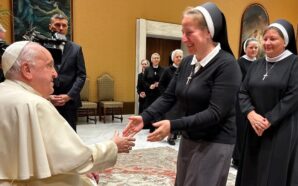Most of the important and lasting customs are not planned but grow like topsy. So if we want to understand all their strands and adapt them for our own times it helps to look back through their history. That is the case with Lent, too.
Initially, Lent linked together a practice common in the ancient world and the Christian focus on Jesus’s death. The practice was fasting, which was part of Jewish religious life and also of many other religions and philosophies. People had found that the experience of fasting clears the mind, takes one out of the ordinary distractions and compensations of daily life, and encourages a focus on what matters deeply. As we dream of chocolate bars and snacks it also reveals our weakness and inconstancy. When we fast, we wait until the end of fasting and the opening of the lolly jar. It is a humbling and purifying exercise that takes us out of our daily world and time.
The Christian focus on fasting was drawn from a saying of Jesus. When asked why his disciples did not fast Jesus said, ‘They do not fast while the bridegroom is with them. When he is taken away, then they will fast.’ The early Christians understood that Jesus was taken away through his crucifixion, but returns in his Resurrection and at the end of time. So dedicated to fasting the day before the weekly Eucharist when they gathered to celebrate Jesus’ rising from the dead.
In later centuries, Christians dedicated a special week and developed special liturgies to remember the Easter events of Jesus’ passion, death and rising. That led naturally to an extended time of fasting in preparation for it. The forty days given to the celebration recalled stories central to Christian faith: the forty years during which the Jews wandered before gaining entry into the promised land, and the forty days that Jesus spent in the desert before he was baptised and entered his public life of preaching.
The fasting took many forms, many of them very rigorous. Some Christians neither ate nor drank until a vegan meal at the end of the day. That must have been difficult for farm workers in the Middle East. They also developed concessions for illness and age, which have been so extended over the centuries that Western Christians no longer experience the effects of earlier fasting. The Muslim season of Ramadan offers the best parallel to the centrality and severity of the earlier Lenten fast and its focus on companionship and later feasting.
The deeper meaning of Lent and its fast, however, remains. It is a time for focusing on what matters, on allowing the death and rising of Jesus to become central in our lives, of waiting for God in prayer, and to turn our minds and hearts to these things as a community. It is a time for attending. The challenge for us is to make space in the busyness and routine of our daily lives for reflection.
Fr Andrew Hamilton SJ writes for Jesuit Communications and Jesuit Social Services.








